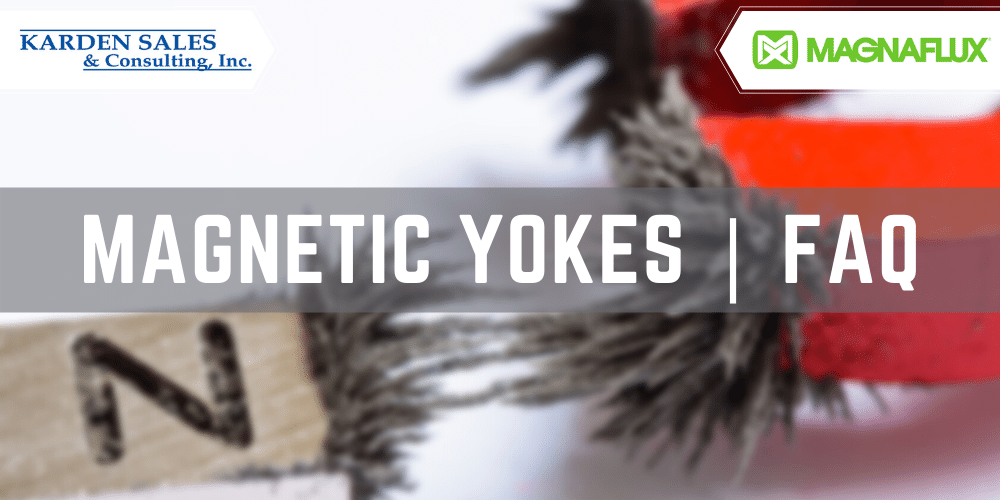How to Do Fluorescent Mag Particle Inspections [Video]
Learn about the magnetic particle inspection method of nondestructive testing, including basic steps for NDT with fluorescent magnetic particles using a magnetic wet bench..

Magnetic Yokes: portable, economical, efficient, and relatively straight-forward to use. This article answers some of the industry's most commonly asked questions about the robust magnetic particle tool.
What is a Yoke and when would you use one?
Also referred to as Contour Probes, magnetic Yokes are portable devices for detecting surface and sub-surface cracking in any ferro-magnetic material. Magnaflux Yokes handle the most demanding inspection jobs with ease; their portability makes them ideal for in-plant inspection and repair of welds, automotive components, steel and gray iron castings, and many other applications.
What types of Yoke does Magnaflux manufacture?
Magnaflux manufactures several types of Yokes:
How can I check the performance of my Yoke?
There are two methods to test the performance of a yoke: one is a lift test using standard test weights, the other is to measure the field strength (according to DIN EN ISO 9934) between the two yoke legs.
A lift test (also known as a Yoke Dead Weight Test) needs to be done once every six months (according to ASTM E1444) and the appropriate weight must be used based on the type of yoke being checked. Refer to the below table on how much weight needs to be used:
| Yoke Type | Weight | Leg Spacing |
| AC | ≥ 10 lb. | 2 - 6 inches |
| DC | ≥ 30 lb. | 2 - 4 inches |
| DC | ≥ 50 lb. | 4 - 6 inches |
What is the difference between using AC and DC when using a Yoke?
Several current forms can be used in magnetic particle inspection. Alternating current (AC) is used to detect surface defects, whereas rectified current and direct current (DC) are used when defects are likely to be sub-surface.
The ability to detect sub-surface defects and the limit of the defect is a contentious subject. This depends on many factors, not least of which is the test environment itself. For example, defects detected within a laboratory set-up on an ideal specimen will almost certainly not relate to a welder’s findings on-site in the middle of winter. Coupled with this, the size and orientation of a sub-surface defect can potentially have a major effect because the flux leakage on the surface will be present as a broad outline. This may not be easily detectable against the background.
What is the correct orientation for a Yoke when looking for defects?
The correct orientation for a Yoke is perpendicular to the direction of the defects.
For a full list of the yokes that Karden Sales offers click here!
We also offer yoke kits that come with everything you need to get started conducting your own inspections.
More Questions? Would you like to talk to someone to see if yokes would be the right fit for your NDT operations?
We'd love to be of service! Please reach out to us at...
Source: "FAQs – Magnetic Yokes" Magnaflux.com, https://www.magnaflux.com/Magnaflux/Resources/FAQs/FAQs--Magnetic-Yokes?utm_source=pardot&utm_medium=email
$1,330.00
Starting at $832.00
$1,641.00
Learn about the magnetic particle inspection method of nondestructive testing, including basic steps for NDT with fluorescent magnetic particles using a magnetic wet bench..
Discover why each magnetic particle inspection accessory is needed to validate the system performance of an inspection..
Handy tips for beginners who are new to magnetic particle testing or NDT pros who want an easy reference guide...